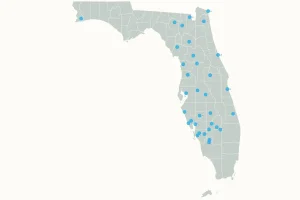Communities Flee as Typhoon Fung-wong Bears Down on Coastal Regions
Mass Exodus: Families Prioritize Safety as Powerful Storm Approaches
In the gray light of early morning, Mei Lin gathered her two young children, a handful of precious family photos, and essential documents before taking one last look at the home she had lived in for over a decade. Like thousands of others across the coastal regions, Mei and her family joined the steady stream of evacuees fleeing before Typhoon Fung-wong could make landfall. “We can rebuild houses, but we cannot replace lives,” she said, clutching her three-year-old daughter’s hand while balancing her infant son on her hip. “Everything else we’re leaving behind is just stuff.”
The approaching typhoon, categorized as a Category 3 storm with sustained winds exceeding 120 mph (193 km/h), prompted authorities to issue mandatory evacuation orders for low-lying coastal areas and regions susceptible to flooding. Emergency management officials described Fung-wong as potentially “life-threatening,” citing not only the destructive winds but also the projected storm surge that could reach heights of 15 feet (4.5 meters) in some areas. “This is not a storm to gamble with,” warned Chief Meteorologist Dr. Akira Tanaka. “The combination of sustained high winds, heavy rainfall, and storm surge creates multiple hazards that can overwhelm even well-prepared communities.”
Infrastructure Mobilized as Communities Empty
Regional transit authorities converted school buses into emergency shuttles, running continuous routes from vulnerable neighborhoods to inland shelters established in gymnasiums, community centers, and university buildings. The mass evacuation represents one of the largest coordinated emergency population movements in the region’s history, with early estimates suggesting over 250,000 people have already relocated to safer ground. “The logistics are challenging, but we’ve been drilling for this scenario for years,” explained Emergency Management Director Gloria Chen. “Our priority is ensuring everyone has access to transportation, especially elderly residents, those with disabilities, and families without vehicles.”
For many evacuees, the decision to leave wasn’t just about personal safety but also about reducing strain on emergency resources. “By evacuating early, we’re not putting first responders at risk later,” said Tomas Reyes, a 56-year-old fisherman who evacuated with his extended family of eight. “I’ve weathered storms before, but Fung-wong looks different. The sea feels different too—there’s a tension in the water that experienced fishermen recognize.” Weather satellites confirm Reyes’ instincts, with meteorologists noting the typhoon has intensified more rapidly than initially forecast, gathering energy from unusually warm ocean temperatures that climate scientists have linked to changing global weather patterns.
Shelters Reach Capacity as Storm Looms
Inside the Westside Community Center, one of dozens of emergency shelters now operating at capacity, volunteers arranged cots, distributed bottled water, and helped new arrivals find space in the increasingly crowded facility. The shelter, designed to accommodate 800 people, was housing nearly 1,200 by midday. “We’re making it work,” said volunteer coordinator Sarah Nguyen. “People understand we’re all in this together, so there’s a remarkable spirit of cooperation.” Medical professionals established triage areas at each major shelter, prioritizing care for those with chronic conditions and ensuring medications remained available for evacuees who left home in haste.
The psychological impact of displacement isn’t lost on authorities, who have deployed counselors and social workers to support those experiencing trauma and anxiety. “For children especially, the disruption of routine and the visible stress of adults can be particularly difficult,” explained child psychologist Dr. Eliana Morales, who volunteered at the Eastside High School shelter. “We’re encouraging families to maintain small rituals from home—bedtime stories, familiar games, whatever helps provide a sense of normalcy amid the chaos.” Teenagers at several shelters have formed impromptu childcare groups, entertaining younger children with games and activities, allowing parents crucial moments to make calls, arrange accommodations, or simply breathe.
Economic Impact Looms Beyond Immediate Safety Concerns
The economic implications of Typhoon Fung-wong extend far beyond the immediate evacuation. The region’s agricultural sector faces potential devastation, with rice paddies, fruit orchards, and aquaculture operations directly in the storm’s projected path. “We’re looking at possible losses exceeding $300 million in agricultural production alone,” estimated Agricultural Department spokesperson Hiroshi Yamamoto. “Many farmers were unable to harvest early, and infrastructure like irrigation systems and equipment storage facilities are highly vulnerable.” The timing is particularly devastating as many crops were nearing harvest, representing nearly a year of investment and labor.
Tourism officials have already calculated losses of approximately $25 million from canceled reservations, with that figure expected to grow substantially if significant infrastructure damage occurs. “We were just recovering from the pandemic’s impact on visitor numbers,” lamented Tourism Board Director Elena Santos. “The coastal resorts that drive our economy are precisely in the most vulnerable locations.” Insurance companies have deployed catastrophe response teams to the region, preparing for what could become one of the costliest natural disasters in recent years. However, many smaller businesses and homeowners in affected areas lack comprehensive coverage for flooding and wind damage, raising concerns about long-term recovery prospects.
Authorities Brace for Impact While Planning Recovery
As evacuation operations continue, emergency response teams are strategically positioning equipment and personnel just outside the projected impact zone. “The window for evacuation is closing,” cautioned Coast Guard Commander James Park during an afternoon press briefing. “Our vessels are securing ports and will soon need to seek safe harbor themselves.” Utility companies have brought in additional crews from neighboring regions, anticipating widespread power outages that could affect millions and potentially last weeks in the hardest-hit areas. Telecommunications providers have deployed mobile units and satellite equipment to maintain critical communications capabilities when traditional infrastructure fails.
Beyond immediate response, government officials have already begun formulating recovery plans. “We’ve learned from previous disasters that recovery needs to begin even before the storm hits,” explained Regional Governor Sophia Wong. “We’re already allocating emergency funds, coordinating with federal agencies, and identifying contractors who can quickly begin clearing roads and restoring essential services.” Environmental experts express particular concern about the storm’s potential to cause contamination through flooded industrial areas and damaged wastewater facilities. Special teams equipped with hazardous materials gear will deploy once conditions permit to assess and contain possible environmental hazards.
Communities Demonstrate Resilience Amid Uncertainty
What stands out amid the evacuation is the remarkable display of community solidarity. Volunteer organizations report unprecedented numbers of people offering assistance, from doctors providing free medical services to restaurant owners preparing meals for shelters. Social media platforms have become impromptu coordination centers, with hashtags like #FungwongHelp connecting those needing assistance with volunteers able to provide it. “In twenty years of disaster response, I’ve never seen such organized grassroots support mobilize so quickly,” remarked Red Cross regional director Manuel Castillo.
For the evacuees themselves, uncertainty about what they might return to weighs heavily. “My grandfather built our house. My father expanded it. I’ve raised my children there,” said 62-year-old retiree Hiroko Tanaka, wiping tears as she settled into a shelter cot. “But my neighbors reminded me that our community isn’t the buildings—it’s the people.” This sentiment echoes throughout evacuation centers, where impromptu community meetings have already begun discussing how neighbors will help each other rebuild, regardless of what Typhoon Fung-wong leaves behind. As the outer bands of the storm begin to reach the coast and the skies darken ominously, the evacuees wait—worried about what they’ve left behind, but grateful for the decision that may have saved their lives.









